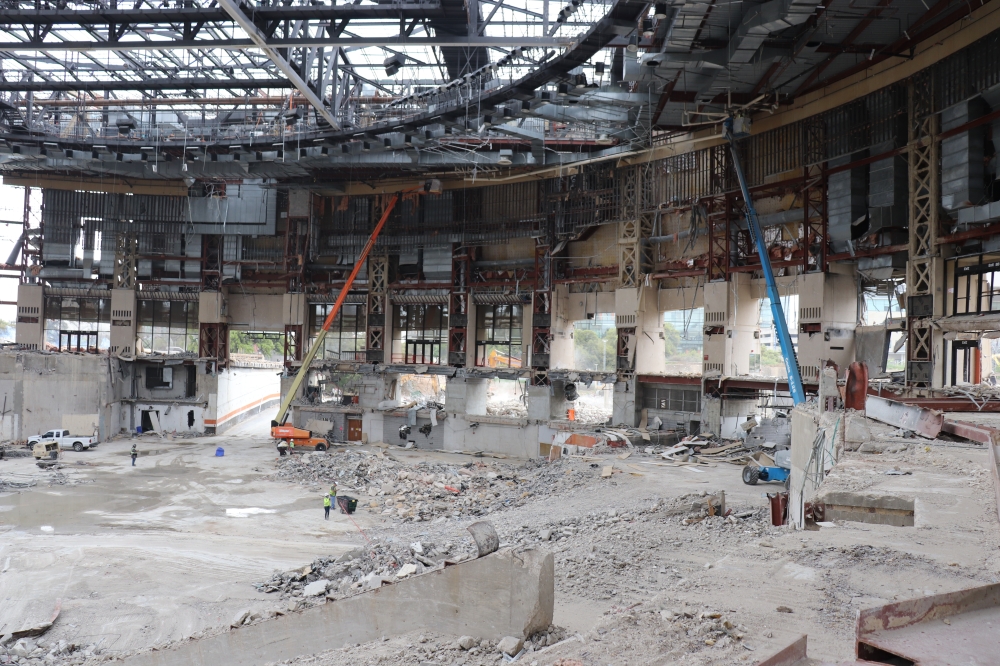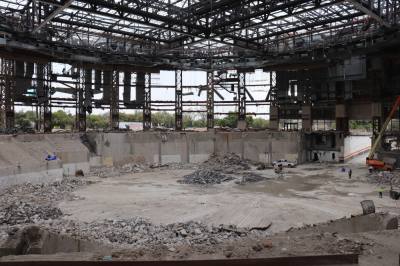Looking back
The center broke ground in 1974 and was completed in 1977, which meant it was built to suit an approximate 50-year standard, said Dan Cook, The University of Texas at Austin's executive director of Planning, Design and Construction. He said that 50 years was as good as most buildings got, at the time, before having to decide between reinvesting a "significant amount of capital" to improve the structure and bring it up to code or simply build a new facility.
The center was around 500,000 square feet, spanning up to six stories that hosted UT women's and men's basketball games, graduation ceremonies, concerts and other large-scale events.
How we got here
The center held its final events in May 2022, and in August 2023, the UT board of regents announced that it would be torn down to make way for the UT at Austin Medical Center, which will include a hospital and MD Anderson Cancer Center. The adjacent Denton Cooley Pavilion, which served as the basketball training facility since 2003, is also coming down.
A couple blocks north is the new Moody Center, completed in April 2022, which effectively replaced the Erwin Center and hosts a similar set of events.
What we know
The $25 million demolition project began in September 2023 and, due to the sheer size and shape of the facility, the Spawglass general contractor team is working to tear the site down opposite to how it was first built, meaning they began demolishing the last parts that were built.
"There is a significant amount of design effort that's required to take it apart ... to make sure you're not taking out a structural component," Cook said. "There's a company that goes through and, on a regular basis, provides information to the team so that they know exactly in which order to go and which sections to take out so that it stays safe for the workers."

There are around 70-100 workers demolishing the center, and almost all of the concrete walls have now come down. Crews are also working on abatement, which is the removal of hazardous materials, including asbestos and lead paint.
Once the concrete panels are all removed, crews will being removing the steel frames and beams before leveling the site completely and ensuring it is flat and safe, Spawglass Project Executive Ryan Syring said.
Cook and Syring both said the process is very methodical and doing so, rather than blowing it up, also allows for up to 80% of the building to be recycled.
"Everything's proceeding on schedule and under budget," Cook said. "It's all happening at the right speed to support what we need to happen."
The project is slated for completion this fall.






